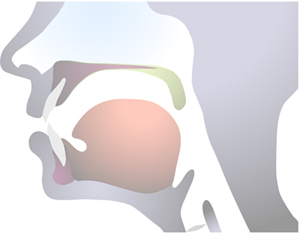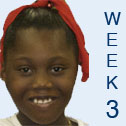Voiced and Voiceless Sounds
Not all sounds are universal. There are sounds that are produced in English that are not duplicated in other languages and vice versa. Herein lies another source of many phonological challenges for English learners. When sounds (phonemes) become distorted, communication can be compromised. Let’s take a look at two categories of sound: voiced or voiceless. All sounds are either voiced or voiceless. Voiced sounds are those that make our vocal chords vibrate when they are produced. Voiceless sounds are produced from air passing through the mouth at different points.
Let’s do a short experiment that helps illustrate the difference between voiced and voiceless sounds. Place your index finger directly above your Adam’s apple and say the following voiceless sounds out loud:
![]()
Now repeat the same exercise with the following voiced words:
![]()
While saying the first set of words, you should have felt a stream of air passing through your vocal chords. During the second set of words, you should have felt an actual vibration in your vocal chords. Practicing this activity with English learners develops an understanding of where sounds are produced and how to manipulate and develop their production.
Remember, not all languages produce the same sounds. For example, the “th” sound in English is nonexistent in most other languages. English language learners will often substitute a familiar sound from their L1 like /t/ or /s/ for “th.” The result will often be the production of “tie” (for “thigh”) and “somesing” (for “something”). This can cause interference with communication.
 One effective way to empower English language learners with the skill of standard spoken English pronunciation is to make them aware of the articulatory organs that produce the sounds. Helping students to identify where difficult sounds are produced will develop pronunciation skills. Click on the graphic to access an interactive version of the anatomy of the articulatory organs.
One effective way to empower English language learners with the skill of standard spoken English pronunciation is to make them aware of the articulatory organs that produce the sounds. Helping students to identify where difficult sounds are produced will develop pronunciation skills. Click on the graphic to access an interactive version of the anatomy of the articulatory organs.









